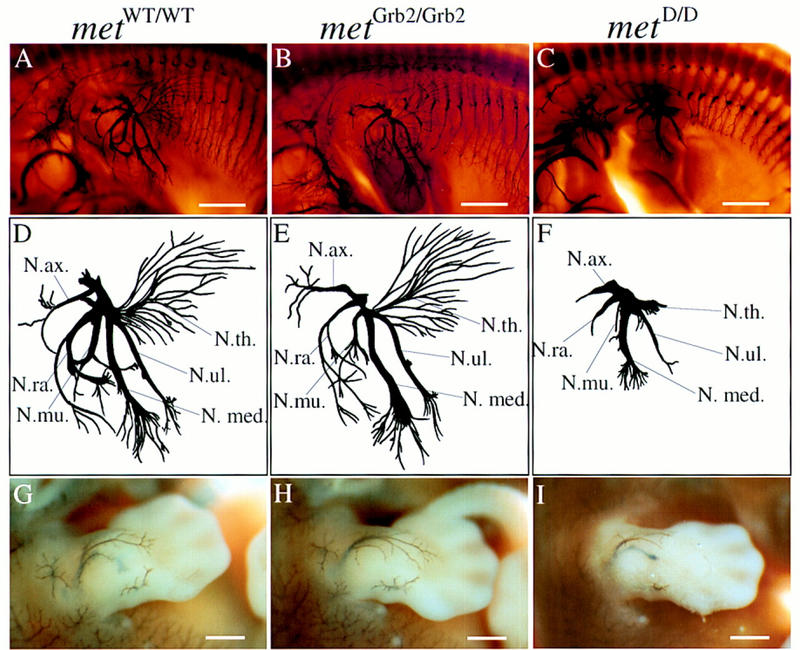Figure 1.

Abnormal limb innervation in mice carrying mutant alleles of the Met receptor gene. (A–C) Whole-mount, anti-neurofilament-stained E12.5 mouse embryos (forelimb and thorax region, dorsal up, anterior left) carrying either the wild-type knock-in allele of met (metWT/WT) (A,D,G), a mild signaling mutant (metGrb2/Grb2) (B,E,H), or a severe signaling mutant (metD/D) (C,F,I). (D–F) Drawings of limb nerves. Note the severely reduced length and lack of terminal branching of all limb nerves in the metD/D mutant embryo (F). In metGrb2/Grb2 mutants, the nervus radialis is severely affected, which could explain the observed deficiency in forelimb extension in metGrb2/Grb2 newborn mice (Maina et al. 1996). (G–I Forelimbs of whole-mount, anti-neurofilament-stained E12.5 mouse embryos before clearing, showing the superficial innervation of the skin. The defects are fully penetrant with six out of six embryos affected. Some metD/D mutant embryos also show misdirection of spinal nerves that innervate the hindlimb (data not shown). (N.ax.) nervus axillaris; (N. med.) nervus medianus; (N.mu) nervus musculocutaneus; (N.ra.) nervus radialis; (N.th.) nervus thoracodorsalis; (N.ul.) nervus ulnaris. Scale bar in A–C, 1.1 mm; in (G–I) 0.6 mm.
